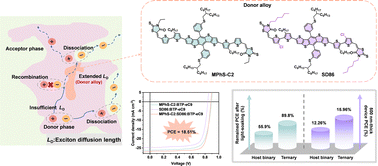Prepare for a hot, tight July 4th freight market
Tender rejections are at 6% and rising, two weeks before the holiday. The post Prepare for a hot, tight July 4th freight market appeared first on FreightWaves.

Trucking carriers operating in the spot market should see a nice payday if they choose loads carefully in the lead-up to the July 4th holiday, based on SONAR freight market data, while freight brokers need to stay in touch with their customers to protect their margins against potentially surging spot rates.
The U.S. truckload market is currently navigating a complex landscape marked by economic uncertainty and fluctuating demand, as indicated by recent trends in tender rejections and spot rates. These indexes, crucial in assessing the health of the freight sector, reveal a nuanced picture of both opportunity and potential peril for various stakeholders within the industry.
Over the past two years, the truckload market has seen a gradual but significant exit of capacity. This contraction can be largely attributed to adverse business conditions that have persisted since the post-pandemic peak. According to FMCSA data, from June 2020 to October 2022, the number of active truckload operating authorities surged by approximately 48%, but they have since declined by about 12%. This downsizing reflects a correction mode in response to overinflated capacity during the pandemic boom, which is still being unwound.
The Outbound Tender Rejection INdex, a measure of the percentage of loads rejected by carriers, has become increasingly volatile, indicating sensitivity to changes in market balance and economic signals. Recent data shows that tender rejection rates have risen above 6% since mid-May, a period coinciding with broader underwhelming demand conditions. This increase suggests tightening capacity and stressed networks, as carriers find themselves more empowered to decline freight in the face of proliferating and lucrative options.
Los Angeles tender rejections currently stand at 2.85%, a small bump following a relative drought of containerized imports amid stiff competition from intermodal rail. At this point, any significant tightening in LA will have implications for the national freight market. Meanwhile, Dallas has seen its OTRI rise more significantly, now standing at 6.8%, up from lower figures earlier in the month. The increase in Dallas is particularly illustrative of regional pressures, which are likely tied to specific industry sectors experiencing localized freight demand rises. These changes highlight the broader trend of rising rejection rates in major freight hubs, suggesting a growing equilibrium between supply and demand that could lead to varying conditions for carriers and brokers alike.

(The national average Outbound Tender Rejection Index [in white] has risen to 6%, and the National Truckload Index, a fuel-inclusive spot rate, has risen to $2.27 per mile).
At the same time, the National Truckload Index (NTI), a national average spot rate, has spiked and receded over the past month and is now at $2.27 per mile. These swings are driven by not only seasonal factors but also wider economic challenges, including inflation and rising costs. This fluctuation in spot rates presents a two-sided challenge: while carriers profit from increased rates, brokers must deftly manage these changes to ensure profitability and maintain a competitive edge.
As the industry approaches the July 4th holiday, historically a peak period for the trucking sector, the increase in tender rejections and spot rates signals a potential boon for trucking carriers. The ability to capture higher rates could bolster their balance sheets after months of challenging conditions. However, this uptick also signals a potential risk for freight brokers, who must work swiftly with their customers to renegotiate contract rates to preserve their margins.
The market’s current state indicates that while there is promise for carriers, the same conditions pose challenges for brokers. The increased rates, if not faced with corresponding contract rate adjustments, will compress broker margins, highlighting the importance of proactive communication and strategic contract management with shippers.
The post Prepare for a hot, tight July 4th freight market appeared first on FreightWaves.















































































































































